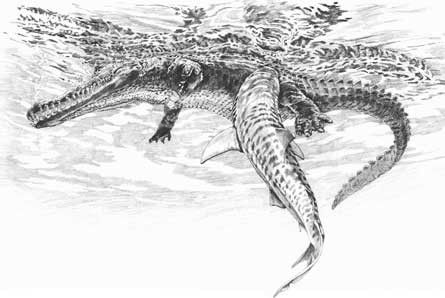Fossilized poop bears tooth marks
Shark-bitten fecal matter probably came from assault on ancient croc
Paleontologists have stumbled across a scientific first that’s sure to inspire both fascination and disgust: coprolites, or fossilized fecal matter, bearing the distinct impressions of a creature’s teeth.


The coprolites — one chunk of rock is fist-sized, the other is about 30 percent larger — were discovered on a beach along the western shore of Chesapeake Bay, says Stephen Godfrey, a paleontologist at the Calvert Marine Museum in Solomons, Md.
The impressions in the coprolites are as much as 6.5 millimeters (just over a quarter of an inch) deep, Godfrey and a colleague report online March 9 in Naturwissenschaften. A silicone rubber mold of the tooth marks indicates that the biter was most likely a close relative of today’s tiger shark.
This fossilized poop doesn’t include visible bits of bone, feather or fish scales like similar coprolites unearthed from 15-million-year-old rocks in the nearby cliffs. But the hunks do have a phosphate-rich composition that hints the fecal matter came from a creature that had fed on bony prey. This, along with the size of the coprolites, suggests they came from a large animal, possibly a crocodilian, Godfrey says.
Although sharks are known to taste-test possible prey, Godfrey thinks it’s unlikely that the shark just took a nip of poop floating by to test its palatability. For one thing, he says, the tooth impressions are much deeper on one side of each coprolite than on the other — a scenario that’s unlikely if the delicate fecal matter had been free-floating.
Instead, the researchers contend, the disparity in the depth of the impressions probably resulted because the fecal matter was still inside the shark’s prey, or constrained within disemboweled intestines, when bitten.







